
The ritual and mythology of Egypt also gave a unique status to the rulers, the Pharaohs. The person of the Pharaoh became the political and religious pivot of Egypt’s widespread culture, and the key to social order. Religiously, the Pharaoh was regarded as the meeting point between the invisible and the visible worlds, the point of contact between heaven and earth: his claims to divine kingship was the guarantee of political stability. Finally, the mythology and cultus of the sun god came to assume great proportions. Just as the sun in its glowing fierceness and benign fecundity dominated the land of the Nile, so the sun god came to dominate the religious imagination of the Egyptian people. The notion that the king himself was divine had an important ritual consequence; he was in theory the link between the gods and men: thus the priests served as his representatives in the divine office. The king was not only identified with the falcon god, but through him, was equated with the sun.
In Egypt, the sun was called pouro which signifies at once 'the fire' (Greek pyr) and 'the king' (pharaoh). And that explains why Copernicus's sun god is seated on the royal throne. The name of the sun god Baal means 'Lord' and 'King'. There is a sentence in the Hindu Oupnek-hat, which runs thus:
"To know fire, the sun, the moon, and lightning, is three-fourths of the science of God.” Deva, God, is derived from the root div, to shine.
F.R. Johnson in his Astronomical Thought in Renaissance England (Baltimore 1937) had shown that the educated Elizabethan had plenty of textbooks in the vernacular instructing him in the Copernican astronomy. But his Elizabethan vogue of the Copernican “magic” met with smart resistance in Ireland. Sir John Davies, poet and author of a prose work on the Irish question remained steadfast in the wisdom he has inherited:
Only the earth doth stand forever still,
Although some wits enricht with learning’s skill
Say heaven’s stands firm and the earth doth fleet
And swiftly turneth underneath their feet:
Yet, though the earth is ever steadfast seen,
On her broad breast hath dancing ever been.
Shakespeare immediately embraced the fashionable doctrine:
The glorious planet Sol
In noble eminence enthroned and spher’d
Amidst the other…
using it to proclaim the glory of the English monarchy:
The sun not only is the King of the sky
But he is like the King
And the King is like sun.
The correspondence between God, the Sun and the King is confirmed by the “healing power of the English King” derived from the “med’cinable eye of the Sol.” In A Christian Familiar Comfort John Norder compares the state to the heavens and Queen Elizabeth and her Council to the primum mobile or controlling sphere, within whose compass any other motion that of Ireland in particular must be contained. Le Roi Soleil is, indeed, one of the most persistent of all Elizabethan commonplaces and was immortalized in her portrait showing her shining face. In Johnson’s Irish Masque the presence of the king is made to transform the apparent wild Irishmen into civilized courtiers: “As the Sun dissolves the chains of winter, and fosters the spring; it is but standing in his eye, you’ll feel yourselves changed by and by, and come forth new-born creatures all. “
According to Punch “the med’cinable eye” of the English kings did not help much. Even in the era of Darwin, “every Irish patriot was considered a Mr. G. O’Rilla fit to be shot down. Because of their belief in “the cosmogony of the semi-barbarous Hebrew, the incubus of the philosopher.” Contemplating, the sunny face of Queen Elizabeth, recall that in the Gospel of John the Jews are called “Children of Darkness,” i.e. Children of Devil.
Recall that the Church that Augustine chose to join was not the old Judeo-Christian church but the new established in the respect of Christian Emperors, sought by noblemen, capable of bringing to the masses the esoteric truth of the Philosophy of Plato. Paul dismissed the Mosaic Law (Torah) which bears the stamp of men liberated from slavery by God and proclaims instead that slaves should obey their masters like wives obey their husbands (Rom 13:5). When the mainstream Christians speak of the black race as the “Simionadea”, the highest order of ape, they combine Paulinism with Darwinism, like Pope John Paul II.
The Britain of Lear was pre-Christian when man was the “poor, bare fork’d animal” stretched out “upon the rack of this tough world.” “Fork’d animal” is a reminiscence of the so-called Pythagorean letter or the letter “Y” signifying the bifurcation of the good and evil ways of man. On the furca or fork the ancient Egyptians crucified their Savior who had the head of an ass…Newton transformed Jesus into a disciple of Pythagoras. Did not “wizards from the’est parties of Jerusalem” hail him as “King that shalt be (i.e. a Macbeth)?”
The publication of Copernicus’s De revolutionibus had an immediate political consequence: it strengthened the claims of all monarchs of Europe to absolute power. Copernicus’s sun sitting on the royal throne and commanding his star family inspired the role of a monarch as Augustus, quasi-divine protector of his countrymen. In the ritualized entertainments of European courts, that theme was stressed from the 1540s by the use of stag sets whose perspective lines emphasized the central position of the audience of the ruler’s throne. Using verse and dance and spectacular transformation scenes, masques allegorically referred to the ruler’s power to tap the harmony of the cosmos and reproduce it on earth. I n his Six Books on the Commonwealth (1576) Jean Bodin went so far as to affirm that it was the sovereign’s rights to impose laws on his subjects “without their consent.”
Galileo owed his release from the chores of university teaching at Padua to his shrewd angling for Medici patronage. Hearing in 1608 of the forthcoming marriage of Cosimo, the heir of the Grand Duke Ferdinand I of Tuscany, he wrote to Cosmo’s mother proposing an emblem for a commemorative medal. In a masterly conflation of science and flattery he suggested the image of a loadstone and the motto Strength Causes Love, explaining that just as the magnetic force of the loadstone draws iron filings towards it, so the attraction of princely power “lifts up his subjects” in loving obedience. This stress on strength reflects the Platonic ideal of state as described in his The Republic which was also embraced by Machiavelli in his The Prince: “This is the origin of a state: the organization of force through army and police, the establishment of rules and laws.” “Just” accordingly means what is for the interest of the stronger, ruling party. Bolshevism was invented not by Lenin but by Plato. Recall in this context the Biblical relation about organizing former Hebrew slaves into a state; it wasn’t by army and police and accordingly “justice” in the Biblical law has nothing to do with strength.
The medal Galileo followed by naming the satellites of Jupiter the ‘Medicean stars’. Within months he was in Florence as Grand Ducal Mathematician with a stipend which was among the ten highest paid to governmental officials in the whole of Tuscany, soaring above those of artists, military engineers and ducal secretaries employed by the court. The political development in Tuscany induced James I to claim in his address of Parliament in 1609 that “the state of monarchy is the supremest thing upon earth…In the Scriptures Kings are called Gods.”
The Tudor state was constantly compared to human body in which the prince was the head that guarded the body politic from anarchy. The 16th century gentleman, whether he lived in Madrid, Paris or London, had a low opinion of the many-headed mob, and one and all agreed that, except for the natural leaders of society, man was “wild, without judgment, and not of sufficient experience to govern himself”. The Elizabethan concept of an ordained and paternalistic commonwealth was enshrined in the Statue of Apprentices of 1563. The act postulated the obligation of all to toil as a social and moral duty. The structure of society was fixed and static, permitting neither a fluid labor force nor any form of social mobility, and it accepted the claims of blood, education and land as justification for both social and political inequality in this world.
Gloriana was God’s anointed lieutenant on earth, and through the Queen rarely bothered to mention the fact, no one, least of all Elizabeth, doubted that she was a god on earth. Elizabeth was addressed on bended knee; like her father she was referred to by the weighty title of Your Majesty and not by the older medieval term of Your Grace. Like pale satellites to Gloriana’s sun, statesmen and favorites, scamps and saints, heroes and bounders, financiers and vendors, patron-seekers and parasites, entertainers and educators were all pulled into the royal orbit, where they glittered in the reflected light of the Queen’s favor. To be banished from the court was to be exiled into outer darkness…
The greatness of Elizabeth’s accomplishment lay in the 6th sense that led her to demand of her subjects only what they wished to give, in the talent of bestowing upon the socially prominent elements of society the fruits of office while depriving them of the power of government, and in the artistry by which she enveloped all functions of state, in a magic veil of pomp and circumstance in which “mere English” Elizabeth was elevated to a Goddess-Queen and her beardless boys at court became Olympian heroes in worshipful attendance. All Elizabethans knew that “in pompous circumstances a secret of government doth much consist.” Government was always on display and the imagination of the multitude was captivated by gorgeous dress robes of state, gold brocade, and majestic processions.
On the continent, men placed loyalty to God, to overlord and to estate higher than their duty to the sovereign, but during the “calm and quiet season” of Elizabeth’s reign, subjects agreed with Lord Burghley when he said that he had “no affection to be of a party, but for the Queen’s Majesty.” The ruling classes of England were tied to Elizabeth by links of air which were yet as strong as iron, for the Queen made appeal to their self-interest and their love, and when she accounted it “the glory of my crown that I have reigned with your loves,” she spoke no more than the truth.
Ch. Darwin – The Last Hyksos
The Hyksos were warlike and self-centered people. They adopted as their chief God Set. By identifying themselves with Set, the Hyksos demonstrated their allegiance with the forces of evil. The concept of Ma.at i.e. righteousness, truth, justice was symptomatic of the “softness” that had allowed their forebears to take the Egyptians’ country from them. The opposite of Ma.at was called Isfet which stood for negative concepts such as selfishness, falsehood and injustice. The leader of these embodiments of Isfet was an evil, dragon-like, monstrous serpent god called Apophis.
Huxley was using a competitive biology to police and pacify the starving crowds. But he could only defend the capitalist war in nature and industry by dubbing it, a “gladiator’s show.” He bowed to its brutal Darwinian necessity as he detached his ethical sorrow from its dead victims. Darwin’s bloody-fanged
bulldog Huxley’s deity was the Babylonian goddess of war and lustful mother of renewed life – Ishtar. To her the first-born were slaughtered.
“And the king of Assyria brought men from Babylon, and from Cuthah, and from Avva, and from Hamath and Sepharvaim, and placed them in the cities of Samaria instead of the children of Israel; and they possessed Samaria, and dwelt in the cities thereof… Howbeit every nation made gods of their own, and put them in the houses of the high places, which the Samaritans had made, every nation in their cities wherein they dwelt. And the men of Babylon made Succoth-benoth…and the Sepharvites burnt their children in the fire to Adrammelech and
Anammelech, the gods of Sepharvaim…Unto this day they do after the former manners: they fear not the Lord; neither do they after their statutes, or after their ordinances, or after the law or after the commandment which the Lord commanded the children of Jacob, whom he named Israel.” (2 Ki 17:24-34)
Lord Disraeli observed that the Victorian London was a modern Babylon. Prime Minister Disraeli embarked on a historic series of governmental innovations. Disraeli, of Italian Jewish descent, passed laws to clear slums, improve public health and factory conditions, and regulate the sale of food and drugs. Much of this legislation was fifty years ahead of its time, establishing England as the most progressive government of the era and a model for other democracies. The Whore of Babylon, the goddess Ishtar erased the Ten Commandments from the hearts of the British.
At Christ’s College where Ch. Darwin was sent to prepare for Holy orders in the Church of England, he paid little attention to his official studies and fell in with a set of sporting young men as keen on shooting, riding, and hunting as he was. Scythian artifacts, in the same measure as Darwin’s The Descent of Man reflect a savage world in which the strong and swift prevailed and life was lived on horseback. Scythians were fearsome fighters given to sadistic customs. Prophet Jeremiah had the Scythians in mind when he warned the Israelites that warriors would come who “are cruel and have no mercy; their voice roareth like the sea and they ride upon horses, every one put in array, as men for war against thee.”
The problem was not that there were insufficient natural resources to go around – medieval Europe was not heavily populated, and there were plenty of forests and other wild areas – the problem was that all the resources were owned. A ruling class had been selected and a set of ruling institutions, ideas, and customs had been selected with them, and by the law of Survival of the Fittest, none could be displaced. Furthermore, not only had the leading roles been chosen, but there were only so many parts to go around. If you wanted to keep your part, you had to keep your place, and there was no place for someone without a part.
Malthus’ Essay on the Principle of Population was published in 1798 when Napoleon’s expedition reached Alexandria. He book suggested the relationship between progress and the survival of the fittest according to the theory of aristocracy that the men born to families with wealth and power will have more ability and better training than the rest of the people. Malthus’ Natural Selection is a real aristocratic reign of terror (R. Virchov referred to Darwin’s The Descent of Man as a “terrorist manual”) matching that of Robespierre: Referring to famine as a check on population, Bishop Malthus wrote in the following incredibly sincere passage from the revised Sixth Edition of his Essay on the Principle of Population (1862):
“…We should facilitate, instead to impede, the operations of nature in producing this mortality; and if we dread the frequent visitation of the horrid form of famine, we should sedulously encourage the other forms of destruction which we compel nature to use. Instead of recommending cleanliness to the poor, we should encourage contrary habits. In our towns we should make the streets narrower, crowd more people into houses, and count on the return of the plague. In the country, we should build villages near stagnant pools, and particularly encourage settlement in all marshy and unwholesome situations. But above all, we should reprobate specific remedies for ravaging diseases; and those benevolent but much mistaken men, who taught they were doing a service to mankind by projecting schemes for the total extirpation of particular disease.” (Jesus in a manger!)
What came out of Malthus would be picked up by Darwin because it suited the social attitudes of the upper classes in Europe and especially British upper classes carving out a world empire from “lesser breeds”. The essence of the evolutionary process is that the fittest organisms survive and leave offspring. It is the highest Darwinian fitness. Following Darwin’s logic one should conclude that the gays and lesbians are not the “fittest” people because they don’t leave offspring. Being a “lesser breed” they should not have the right to adopt the children.
The Hungarian physician of Jewish descent I. Semmelweis, working in Vienna, showed that something as simple as doctors washing their hands before examining the next patient could greatly reduce the spread of infectious diseases. Semmelweis was treated dreadfully by the medical establishment for suggesting that Mosaic hygiene might save lives; he was driven to insanity and suicide. Recall that classical retrospective example is the view of Moses as “an enlightened public health administrator, rather than as a spiritual leader” because certain of his precepts enhanced individual bodily health.
Victorian London under the influence of Malthus’ theory was in worse shape than most third world cities today. Whenever it rained hard and the sewers leading into the Thames overflowed parliament had to adjourn because of the stench. Henry Mayhew, the pioneering sociologist, tells of visiting London tenements in the 1850s, to find that decades of human excreta had been allowed to pile up in the courtyards.
To the upper classes Malthus had it right. They were the fittest. As regards the tragic death of Dr. I. Semmelweis, a Jew, you should keep in mind that Darwin’s ideas were made into a “satisfying” theory only when they were combined with the insights of Austrian monk G. Mendel. Do you recall E. Presley’s song about a child born in ghetto? It is a song about Darwin’s legacy. In the USA, the infant mortality rate among blacks is 1.8 times that for whites.
Malthusianism is scientifically bankrupt – all predictions made upon it have been wrong, because human beings are not mere consumers of resources. Rather we create resources by the development of new technologies that find them for us. The more people, the faster the rate of innovation. This is why, contrary to Malthus as the world’s population has increased, the standard of living has increased, and at an accelerating rate. Nvertheless, in a closed society Malthusianism has the appearance of self-evident truth, and herein lies the danger. Unless the people can see broad vistas of unused resources in front of them, the belief in limited resources tends to follow as a matter of course. And if the idea is accepted that the world’s resources are fixed, then each person, and each race or nation is the enemy of every other race or nation. Only in a universe of unlimited resources can all men be brothers. Keep in Mind that, according to the Bible, God created the world, in order to continue the creation. All human math is a futile endeavor.
David Hume in his Dialogues Concerning Natural Religion observed: “Matter may contain the source or spring of order originally, within itself, as well as mind does and there is no more difficulty in conceiving, that several elements, from an internal unknown cause, may fall into the most exquisite arrangement, than to conceive that their ideas, in the great, universal Mind, from a like internal, unknown cause, fall into that arrangement. The equal possibility of both these suppositions is allowed. But by experience we find that there is a difference between them. Throw several pieces of steel together, without shape or form; they will never arrange themselves so as to compose a watch; stone, and mortar, and wood without an architect, never erect a house. But the ideas in a human mind, we see, by an unknown, inexplicable economy, arrange themselves so as to form the plan of a watch or house. Experience, therefore, proves, that there is
“an original principle of order in mind, not in matter.”
The design of human eye and also of ear and of nose points to God who continues His creation by enlarging the earth for growing populations of innumerable creatures. Tears which are produced by lacrimal glands help to clear eyeballs of foreign particles, such as dust, and keep them from drying out, which would result in blindness. Each time the eyelid blinks; it sucks a little fluid from the glands. After the tears pass across the eyeball, they flow out through two lacrimal ducts that open at the inner corner of each eye. They lead to a lacrimal sac and then to the nasal duct. This duct runs the length of the nose and finally opens into it.
The external auditory canal is the opening you see if you look directly into the ear. The outer third of the canal is lined with fine hairs and with the tiny glands that produce wax. The hairs and wax trap dust and other small particles. Both nasal passages have a lining of soft, moist mucous membrane covered with microscopic, hair like projections called cilia. The cilia wave back and forth constantly, moving dust, bacteria, and fluids from the nose to the throat for swallowing.
These “shields” were created by the same creator who continues to create.
If it not were for meteorite showers that the Creator of the Heaven and the Earth sends upon the surface of organic sediments, coal could not have been formed. Coal consists chiefly of carbon, derived directly from organic carbon compounds such as starch, sugar and cellulose which, with water form the bulk and substance of vegetation. The carbon in the plants that later formed coal was not obtained from the soil by way of plant roots, but from the air by way of leaves. Being the only known natural agency known capable of abstracting large amounts of carbon from the air, plants employ it in the construction of their own tissues and store up for future use. Coal is fossilized plant material, preserved by burial and altered by earth forces. In order that the organic sediments could have been transformed into coal they had to be covered by billions upon billions tons of earth sent as meteorite showers, which made possible compaction and condensation. The distribution and amount of meteorite dust falls are controlled by the air currents and winds in the upper atmosphere and then are dispersed by the different systems of air streams which could be compared to rivers in the oceans.
The work of these air streams is very accurate which was shown by the geological survey of Sahara. Radar pictures taken by the US shuttle Columbia have revealed Stone Age camp sites and huge hidden river beds in the Sahara. To check the validity of the pictures, scientists went to North Africa in the summer of 1982 and dug in the sand. Their finds confirmed the accuracy of the radar images and of the atlas made by Abraham Cresques whose Catalan Map of 1375 had something of the same effect as the discoveries of Columbus over a century later. It pushed back the frontiers of the known world; it gave a new reality to the rumor of half-believed travelers’ tales. It showed the Atlas mountains broken by a pass that was used by merchants “going to the land of the Negroes of Guinea” – the great southward route that North Africans had used since time beyond memory.
The radar pictures taken by Columbia belied all those who explained the covering of the Great Sphinx as a result of engulfing it by the shifting sands of Sahara. Now we know that the Sphinx disappeared from the face of the earth similarly as the stone age camp sites – covered by mountains of sand. For the first time the Sphinx was excavated during the reign of the Pharaoh Thutmose IV about 1450 B.C. And then, it had been covered again and again. In the 19th century, when it was found by the archaeologists it was again largely engulfed in sand. Indeed, the Creator accurately distributes His hosts on the face of the earth.



















































































































































































































































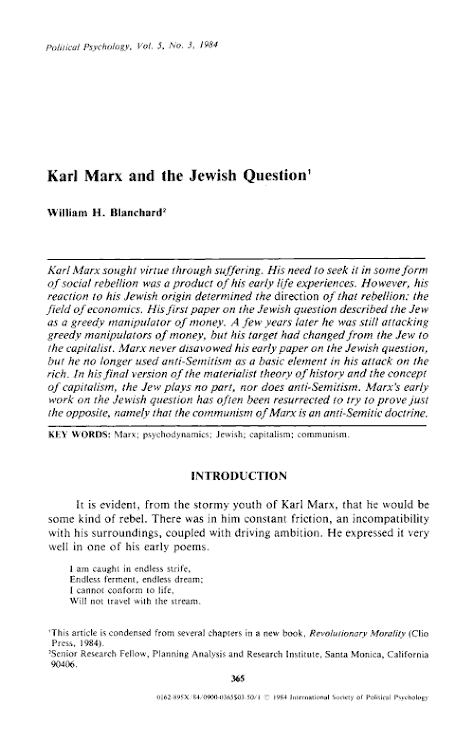











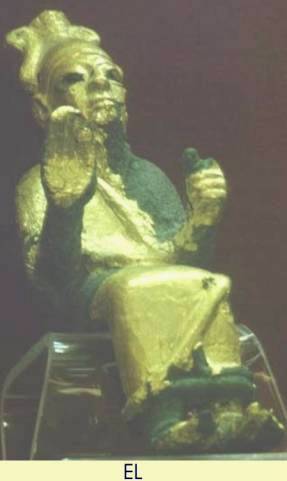

































+Anniversay+Dinner.jpg)





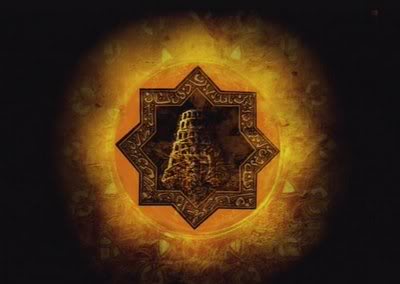









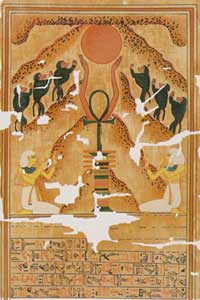








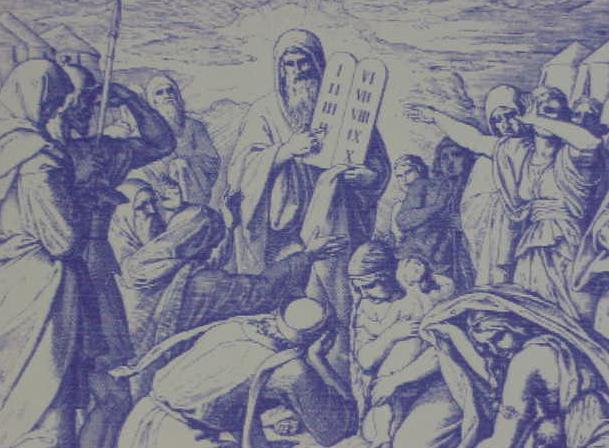
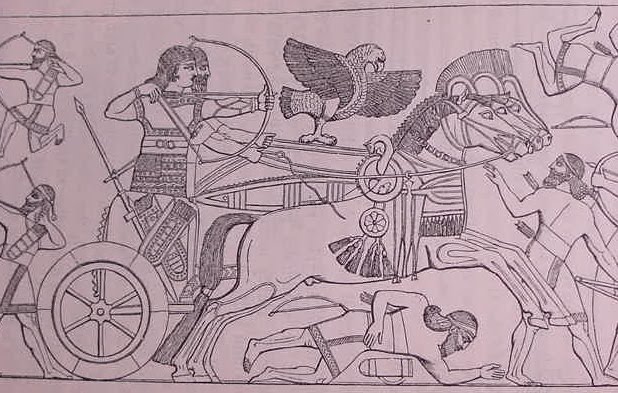



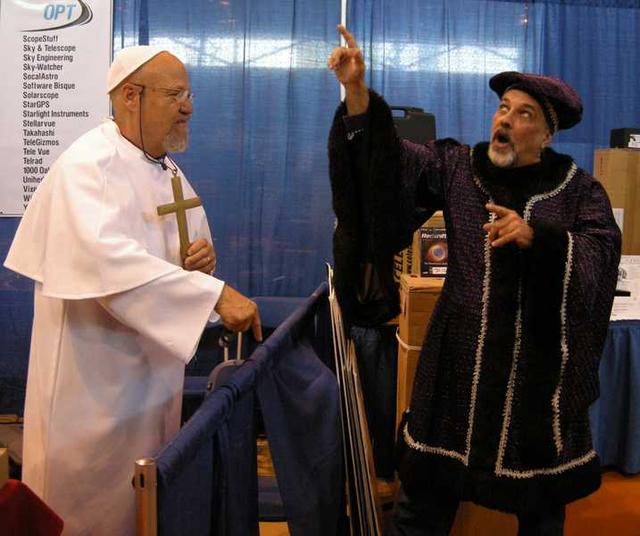




















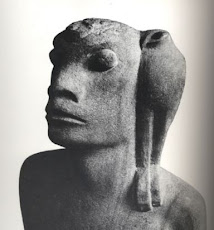












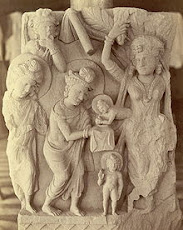



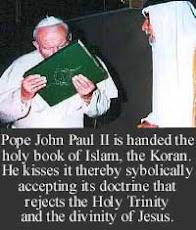












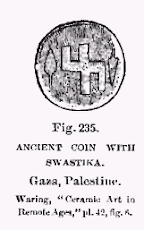



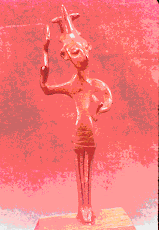






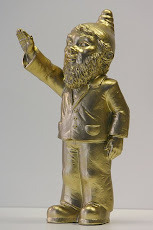










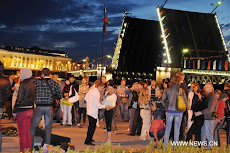

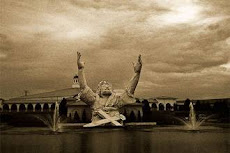














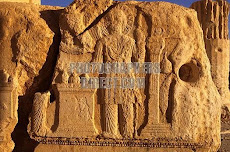


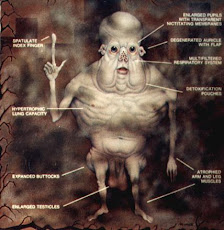






















No comments:
Post a Comment